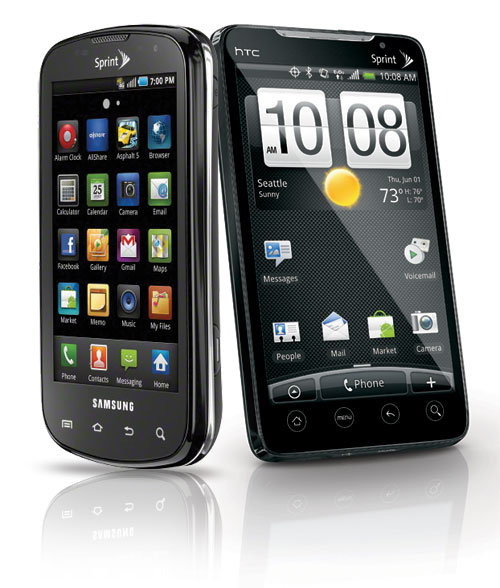











On Saturday, I had the pleasure of attending Case Competition Club’s “Crack the Case” Competition, as creative marketing director, hosted by KPMG.
There were around 18 teams that applied, and only 7 accepted into the competition. Originally, I had planned on applying for the competition, but I’m glad that I got to do timekeeping instead.
Timekeeping sounds like such a simple task, and it was, essentially. However, what was great about the role was only that it was simple, but also that I could watch the entire presentation and judging process. That being said, I took down a lot of notes on what the judges looked for, and what they looked for in a presentation.
General format of the competition: 4 hours prep, 10 minute practice, 15 minute presentation, 10 minute Q&A, 5 minute judge review.
Judge’s specific criteria (based upon memory): PowerPoint, content, presentation skills, recommendations, and Q&A.
While these are general guidelines to the presentation, the judging really didn’t come down to the marks chosen based on the criteria. Analysis had to be concise; recommendations required back-up evidence; implementations had to be realistic in terms of manpower, cost, and time.
Finally, one of the most important aspects of the case was the presentation. I took down some notes after each presentation and judge’s debrief and compiled it to the information below:

CONTENT

POSTURE
SPEECH
*To put this into perspective, I made tallies on the last two groups of the times they said a particular word. A few fibs are okay, but there is a definite boundary to what is acceptable and what is just purely distracting and superfluous.
| You know | like | Um/uh | Wanna/gonna | Kind of/kinda | You guys |
| 9 | 1 | 13 | 3 | 2 | 1 |
| 4 | / | 6 | / | / | / |
| / | / | / | 3 | 1 | / |
| / | / | / | 1 | / | 1 |
| 13 | 1 | 19 | 7 | 3 | 2 |
| You know | like | Um/uh | Wanna/gonna | Kind of/kinda | You guys |
| / | / | 12 | / | / | / |
| / | / | 20 | / | / | / |
| / | / | 27 | / | / | / |
| / | 8 | 30 | / | / | / |
| / | 8 | 89 | / | / | / |
“If at the end of the day there’s someone out there who has a better day because of us, then we’ve succeeded.” — Wong Fu Productions
From one simple 15.5 minute video made for fun in University, WongFu Productions has expanded into it’s own company.

WongFuProductions, their video channel, grew on Youtube a while after the short. Since then, Wong Fu Productions has put out many shorts, web series, music videos, and even collaborations with other Youtube artists. Instead of putting out videos ranting about current celebrity issues and people falling off trampolines, they bring substance and important themes to their videos. Many of their shorts capture beautiful scenes as well as a heartwarming story, but they also have humorous PSA’s, informational shorts, and covers for various trendy songs. Currently, they have been working together with other huge artists with individual channels such as Nigahiga, DavidChoi and Kassem G to create a feature, airing today (November 24, 2010).

To tie this to entrepreneurship, establishing a Youtube channel has been the new way to fame for many current artists, and even companies such as in this case. A more familiar example of this particular way that emerged with Generation Z is Justin Bieber, now one of the youngest sensations.
“If you can dream it, you can do it.”-Walter Elias Disney

Once Upon A Time,
there was a man who started off with a small but brilliant idea. Walt Disney was an entrepreneur who left behind a legacy, not to mention an entrepreneurial company now worth more than $72 billion, that triggered a snowball effect which lead to huge advancements in motion pictures, animation, and eventually three dimensional cartoons (Pixar Animations). In addition, Disney also started the first of the themed parks or “playlands.”
To put into perspective the huge impact and success the Walt Disney Company has made since it’s inception in the 1920’s, one can simply ask: “what is one thing that repeatedly comes to mind whenever someone mentions princesses, fairytales, or children’s Halloweens?”

The company is extremely unique in that each new princess, animal, or toy movie it releases basically launches its own franchise; within a short amount of time, one movie produced by Disney could create a substantial amount of wealth. No other company comes close to producing as many universally renowned icons as Disney: Mickey Mouse, Tinkerbell, Winnie the Pooh, Toy Story, Hannah Montanna, 101 Dalmations… and the list goes on. Most importantly, though, the motifs and images consistently maintained is a crucial component to the company’s connotations of happiness, integrity, devotion, and love.

In class last week, we had an in-class “CSR Project.” I suggested an idea that I am very passionate about to our team. Here’s a rundown for the sheet we handed in, modified for blogging purposes:
PROPOSAL: Operation Reusable Chopsticks

PLACES (Organization Name): Cafeteria, SUB food court (Manchu Wok), Village

OPPORTUNITY:

WHY CHOPSTICKS?
The plan I propose primarily targets UBC’s residence cafeterias. The cafeteria has already been doing their environmentally friendly part, for instance offering metal forks, knives, and spoons next to the disposable ones. These eating utensils are then dropped off in a soap-water box during tray and garbage disposal. They also have a Tupperware system, which allows for each Place Vanier or Totem resident to pick up one free Tupperware, get more “bang for the buck,” receive a discount, AND get their containers washed for free. However, they do not have any such system for chopsticks, though UBC’s cafeteria offers sushi, not to mention an entire Asian cuisine section.

INITIATIVES:
Today, I went to Jimoco Café & Pasta with my parents for lunch. Because the place is extremely popular but relatively small, with about 4 booths and 6 tables each fitting 3 or 4 people, people have to call in for reservations (refer to picture below).

You can see on the poster pasted on the window that Jimoco has a “Grand Opening: 2 for 1 Pasta Special.” This is quite peculiar, as the restaurant has been open for a year already. This deal, however, is what I attribute largely to Jimoco’s popularity.
The pricing of each pasta ranges from $9 to $15. After the special, each pasta comes down roughly to $5 to $7, which is still outrageously cheap. So where does the revenue come from? Aren’t the customers benefiting much more than the restaurant owners?
First of all, the special being “2 for 1” is critical (in comparison with “buy 1 get 1 free,” “buy 1 get 1 half off,” “20% off between 12 and 1…” etc.). With this special, customers almost always come with another person. Oftentimes, people will come in large groups after school, a big gathering, or church events. Then, as more people come, the chances of them purchasing appetizers and drinks increase. Furthermore, the breakfast prices are very cheap as well- before 9:30 AM Every Tuesday to Friday, meals are only $3.00. The low pricing strategy is definitely a smart idea, as the consumer flow is large enough (it is situated on a busy road with many stores, though parking can get tough), and customer loyalty is very easily built.
This clever tactic is not only the reason for their success, however. The chef is outstanding, having trained in Parma, Italy.
Here’s what I had to eat.


“People don’t change behavior or positions based on what they know. They change based on what they feel.” — Oprah Winfrey.
After an engaging lesson about social media in class, and especially watching the captivating introduction video on Social Media Revolution, I became very curious about the actual standings for the most visited social media websites.


I soon came across a website with charts illustrating the market shares of visits to social media websites for every month of the year since early 2008. I found the progression of Facebook very intriguing. Here are a few of the charts below:



It is amazing how a fad necessity can be adapted so quickly across one nation. In early 2009, MySpace had surpassed Facebook in market shares by a long shot. However, Facebook and Youtube caught up rapidly within a mere year. As of last year, Facebook had announced that it had reached more than 250 million users, 20% of which were acquired within the last three months of the count.
So what are the effects of social media on companies? In essence, it has become harder and slower for companies to react to community activity and negative publicity.
Following Trina Mousseau’s presentation, the conference attendees were split into separate workshops. I attended the market research workshop with Nick Black, the Vice-President at Concerto Marketing Group.
The PowerPoint presentation itself was interesting, but what was most intriguing was definitely the insight he offered in addition to the accessible presentation. He explained an aspect of marketing, which he knows best, that is rarely discussed in classroom situations.

Two categories, he said, fell under marketing: Agency and Client.
|
Agency |
Client |
|
Research Strategy Media ATL BTL (Concerto, Inventa) |
P&G Coca Cola AXA |
“ATL” is short for above the line, which refers to press releases, television and the like which are targeted mainly towards the masses.
“BTL” stands for below the line, which targets more specific individuals with catalogues, mail, promotions and can gather a bit more specific insight.

Nick then proceeded to talk about the pros and cons of starting out in each section, and this immediately led me to recall a past Commerce class when the table of income for entrepreneurs and employees was displayed. The question posed as to whether or not one should work in an environment of structure and monotony, or enter into a field with relatively less pay to start with, but is a job that is more individual and enjoyable.
On Saturday (September 2nd), I attended a conference held by AdvertisInc themed “birth to prosperity of an idea.”
At this event, there were manyenlightening keynote presentations that are worth sharing. This review will illustrate some of the important ideas outlined in the conference, and will be posted in two parts, each underlining a stressed aspect throughout the conference.

Inspiration
“We are all springboards for ideas.” – Trina Mousseau
As a Creative Account Manager at Inventa, Trina Mousseau knew everything to the invention of ideas. She shared with the audience the general creative process; what specifically engaged the audience was her insight into the brainstorming process (in essence, coming up with the ideas themselves).

1) Negativity Kills

Her first tip during brainstorming was to write everything and anything, even if it’s crazy. It’s all about delving into undisturbed earth.

2) Tips and Tricks
So what happens when you get stuck? Here were some of her suggestions.
– Find a random word/picture
– Role play (What would _______ do?)
– Silos (two minute brainstorms on paper with different sections)
– Inspirational websites:
On a final note, this is where I share my inspirations with the world: http://mochamacchiato.tumblr.com/.

– HAPPY INSPIRATION FINDING
Apple products are “all the rage” amongst young and old: high school students keep iPod Nano’s or Touch’s in their pocket to deter boredom; university students have either iPad’s to read eBooks or a Macbook Pro’s to take notes on (sometimes even both); adults collect every generation of the iPhone.
Without a doubt, iPhones are fast, convenient, and aesthetically appealing. However, for equivalent pricing or less and the same or better specs, there are many alternative smartphones that are less popular merely because they lack Apple’s brand reputation (related video recently receiving more than 8.8 million hits). Such are the Samsung Epic 4G and HTC Evo 4G.
 These devices both support the fast Sprint network and customizable Android operating system. Both phones have a wider screen than the iPhone and better resolution cameras/VGA’s.
These devices both support the fast Sprint network and customizable Android operating system. Both phones have a wider screen than the iPhone and better resolution cameras/VGA’s.
The Samsung Epic offers an AMOLED screen equivalent to iPhone’s retina display; plus, it sports a 1500mAH battery which allows for a longer battery life. Furthermore, the Epic provides a slide-out QWERTY keyboard. Also, a new input method for Android smartphones is Swype, which set the Guinness World Record for fastest texting ever.

So what’s the difference?
Essentially, good marketing. Apple establishes a strong emotional connection with its advertisements, contributing to user loyalty.